#Ad Campaign Call Metrics
Explore tagged Tumblr posts
Text
Auto Technologies Inc.
Marketing Agency

Marketing Agency
Address- 7500 College Blvd., Overland Park, KS, USA 66210
Phone- +1 866-673-5476
Email- [email protected]
Website- https://aticalltracking.com
Unlock the power of data-driven decision-making with our comprehensive Call and Advertising Tracking Services. Elevate your marketing strategies by gaining unparalleled insights into customer interactions and campaign performance.
Key Features:
1. In-Depth Analytics: Track and analyze every customer call to understand the effectiveness of your advertising efforts. Gain valuable insights into caller demographics, preferences, and behavior.
2. ROI Measurement: Quantify the return on investment for your advertising campaigns with precision. Our services provide detailed metrics on the success of your marketing initiatives, enabling you to allocate resources effectively.
3. Dynamic Number Insertion: Implement dynamic number insertion to seamlessly track calls originating from various advertising channels. Know exactly which ads are driving customer engagement and conversions.
4. Keyword-Level Tracking: Pinpoint the keywords that generate phone calls. Optimize your advertising strategy by focusing on high-performing keywords and eliminating those that don't contribute to call volume.
5. Real-Time Monitoring: Stay informed in real-time with live monitoring of incoming calls. React promptly to campaign performance and make adjustments on the fly for maximum impact.
6. Multichannel Visibility: Whether it's online or offline advertising, our services provide a unified platform for tracking calls across multiple channels. Understand the holistic impact of your marketing efforts.
7. Call Recording: Enhance customer service and training by recording and analyzing customer calls. Gain insights into customer feedback, identify pain points, and refine your advertising approach accordingly.
8. Location-Based Tracking: Understand the geographical reach of your advertising campaigns. Identify regions where your ads are most effective and tailor your strategy to target specific locations.
Empower your business with a comprehensive solution that bridges the gap between advertising and customer engagement. Our Call and Advertising Tracking Services revolutionize the way you measure, analyze, and optimize your marketing efforts, ensuring every call contributes to the growth and success of your business.
Business Hours- Mon - Fri: 9AM - 5PM
Payment Methods- All forms of payment accepted CC, Amex, Discover, Paypal, Venmo, Check, Wire
Year Est- 2002
Owner Name- Roberta Long
Follow On:
Facebook- https://www.facebook.com/autotechnologies
Twitter- https://twitter.com/autotechnologie
LinkedIn- https://www.linkedin.com/in/autotechnologies/
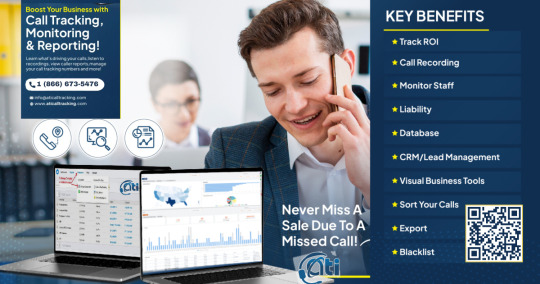
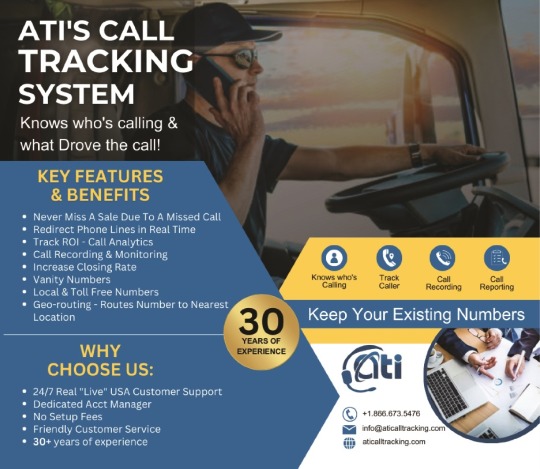
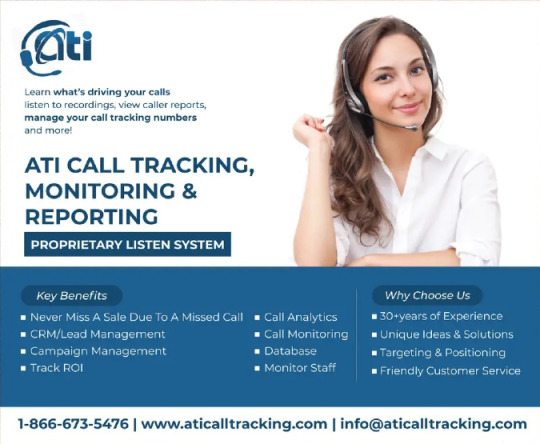

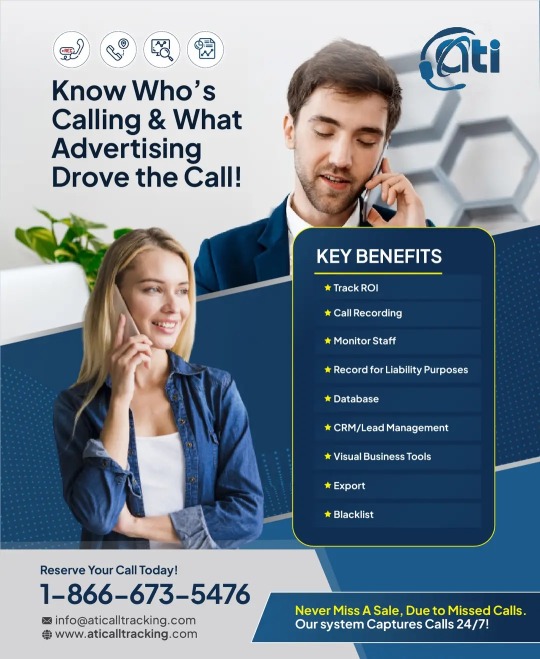
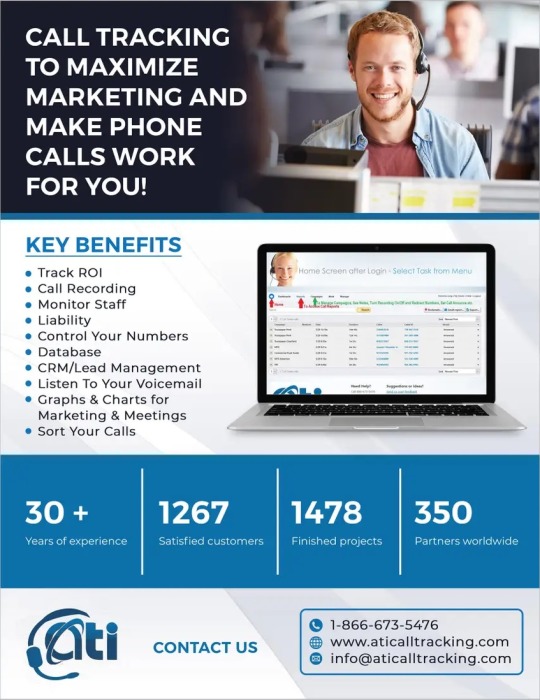
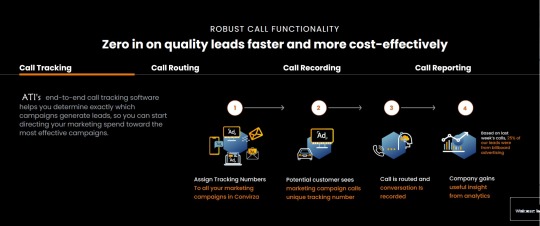
#Advertising Call Tracking#Call Monitoring for Ads#Campaign Call Analytics#Customer Call Tracking#Ad Performance Metrics#Call Attribution for Advertising#Inbound Call Monitoring#Outbound Call Analytics#Call Tracking Software for Marketing#ROI Tracking for Calls#Keyword-Level Call Monitoring#Ad Campaign Call Metrics#Call Conversion Tracking#Ad Response Tracking#Click-to-Call Analytics#Multichannel Ad Tracking#Lead Source Call Monitoring#Real-time Ad Call Tracking#Ad Impressions Call Metrics#Ad Spend ROI Analysis#Dynamic Number Insertion for Ads#Location-based Ad Call Tracking#Call Recording for Advertising#Customer Interaction Analytics#Offline Conversion Tracking for Ads
1 note
·
View note
Text
How much should it cost to be a writer?
It depends what route you’re taking. If you are planning to go for traditional publishing, which looks like you finishing a manuscript and then querying agents who will then take your book to publishers, you should be paying for basically nothing. One exception would be if you decide to hire an editor to get a pass over your manuscript and/or query package before sending it off, but this is not required.
If you are in the process of trying to get your manuscript traditionally published, you may be approached by a “publisher” offering to publish your manuscript for a fee. THIS IS A SCAM! An author should never be paying for “publishing services.” Anyone asking you to pay for your own printing, marketing, etc. costs is taking advantage of you. These are called vanity publishers and they will not turn you a profit, help you attract readers, or provide you the prestige of being published.
Always check on Writer Beware - search for the name of the person or company. You can also just google that name along with the word “scam” or “reviews.” In general, don’t let yourself be blinded by dreams, or let yourself be convinced that something is a good idea because you really want it to be true. Never, ever, ever pay a publisher.
If you are going the self-publishing route, you will be paying for certain things, but none of those should be payment to be published. You are the publisher. Uploading your manuscript to Amazon or other marketplaces is free. However, you will be paying for things that a publisher typically pays for. This could include:
-Cover art - you could do this yourself, though this isn't recommended. A good cover is key to a book's success, so budget to purchase a pre-made book cover, or hire a professional cover artist.
To find pre-made book covers, you can just Google "premade book covers," or check one of these sites: BookCoverZone RockingBookCovers Beetiful
And here's a list of places to buy both custom and pre-made cover designs that's a good start. You can also check Reedsy and Etsy for people listing cover design services. If there is a self-pubbed author whose covers you love, try asking them what artist they use.
-Formatting - you could do this yourself using a formatting program like Atticus, or you could hire someone who does professional e-book formatting.
Here's an article on the turbo-DIY route. Here's a list of formatting programs you can use. To hire someone, you can simply search for book formatting services or look at places where people list such services for hire, like Reedsy, Fiverr, or certain Reddit boards.
-Ad campaigns - you may want to pay for ad campaigns on platforms like Meta or Amazon. More niche, author-specific platforms like BookBub, Book Funnel, or Book Sirens also come with certain costs.
-Author services - you may wish to hire an expert in things like marketing, blurb copy, social media metrics, newsletter management, etc. You can find information on that here.
Be aware that scam publishers might try to pitch themselves as "author services" - you should be paying someone to help you with specific aspects of your self publishing work, NOT paying to be published.
-Software and platforms - whether it's a subscription to Duotrope, a paid Scribophile account, access to pro Canva features, etc. you may decide to pay for tools that you will use to do your work well.
-Expert advice - some people offer courses, books, or other resources on how to do specific things like write a compelling blurb or run an effective ad campaign. You may notice that a lot of the links I shared here will include upsells from people doing exactly this!
Be very cautious about this, as most of these people claim that they make tons of money on their self published books, but really, they make their money selling this stuff to people like you. Always check out a person’s free resources first, and wait to invest in this sort of thing until you have a specific question you need answered or are trying to do a very particular thing that you need granular guidance on.
One thing you should NOT pay for is a review, feature, or interview. Self-published authors will be approached by a lot of scammers who claim that, for a nominal fee, they will share information about your book to their huge audiences. These are completely useless and a waste of money. Never spend money on this.
Always keep track of what you are spending on all of this. You may be able to deduct it from taxes you pay on your income from writing, and you will want to really understand what your profit margins look like.
68 notes
·
View notes
Text
Nein Again - 2x12 "Midnight Espionage" + 2x13 "Lost & Found"
You thought I was busy last time? I'm doing two episodes in one to catch up! But I'm sure these episodes will be entirely uneventful and boring, with no long-term plot ramifications. Spoilers ahoy!
2x12:
I rate this Sam Riegel DnD Beyond ad a 4/10 I don't know who told Sam Riegel about F.A.T.A.L but they will pay.
Everyone roasting Travis for picking up his wife's dice superstitions/habits makes me smile.
The fact Laura can actually copy people's handwriting gives me a few questions.
Is Marion's wall safe behind a giant nude painting of her or something?
Fjord what in the dear sweet abyss is a "Dark Physician"? Did the orphanage send you to an evil doctor?
I wanna play a oneshot where everyone's a Level 1 Bard with ball bearings.
I do love that Caleb is now a measure of filthiness (something Americans something something Metric system)
I don't have anything to say about the Hospital Incident. I think it speaks for itself.
Getting in a pillow fight with a Tiefling sounds like a great way to rip open some pillows.
The sausage grease trick is very smart but also makes me wonder if someone's written a fic of the whole campaign from Frumpkin's POV. I'd read that.
Honestly bless Ulog for going along with this comedian bit.
"Why does it feel like you roll crappier when you're lower level?" It's this thing called Lower Proficiency Bonus.
Nott is so bad at being a Rogue at first. Thank you Matt for giving them another.
I think Travis snuck a Fnaf reference in there under his breath.
Okay but unironically Jester would've watch The Neverending Story like 50 times.
"Ulog is a little girl" and Dariax was born.
Here at Critical Role, we always support commiting to the bit when your character is paralyzed by holding a strange position for way too long.
HIGH PRESSURE WEIRD SHIT REPORT: Caleb has stolen a Sending Stone from Lord Sutan's home.
"Everyone thinks that Matt is managing three storylines right now, but there's actually a fourth that we don't even know about." Presented without comment.
The fact that the High Richter has forbidden smut is so funny.
Shout out to Fjord holding Caleb at swordpoint can't wait for it to be even gayer in the cartoon.
Oh the delightful irony of Caleb getting blown up by an anti-Imperial revolutionary.
2x13:
I rate this Sam Riegel DnD Beyond ad a 5/10 since I don't like Chicago.
Darkness is such a surprisingly meh spell. Unless you have Devil's Sight it's good for covering an escape and basically nothing else.
Oh yeah Nott is proficient in Persuasion I always forget that.
Echo Knights are so creepy at first, kudos to Matt for that.
Poor Travis is trying to hard to keep track of all the dangerous things on this man.
I'm surprised Molly didn't make any 'sailors and knots' jokes about Fjord right now.
Caleb has known these people for a week and he's already whipping his dick out we should've known he was a Whore.
Matt has already given up on getting these people to not say "Insight Check".
"Maybe you should stare at it some moooooore" Remember gang Jester has no bad ideas.
People have memed before about the Nein's improvised plan to steal the Beacon in the middle of the crowd being so much better than the heist they were just agonizing over. And my conclusion is that this means the Nein need a jazz soundtrack. Because that's how jazz works. I think.
The irony of Beau, noted kung fu/library school dropout, potentially telling someone to stay in school.
Oremid Haas totally keeps a bowl of lollipops in his office.
Also it's hilarious how fast they got obsessed with Pumat Sol they've visited him like every episode since they met him.
Marisha's little giggle when Nott calls Beau "the grumpy one" makes me smile.
Poor Claudia is just trying to lay low after her former countrymen perpetuate a terrorist attack.
"...Who are that?" Greatest delivery of the episode.
Lauren is Also Claudia isn't she
And Yorick is the best accent Caleb will ever do.
I love how Molly's argument here is clearly Circus Rules even before he says it.
Also him telling Nott she's not nearly as smart as she thinks she is is maaaaad projection on his part.
The exploding scroll case is so funny to me for no reason. RIP Schmidt we thank you for your service.
Does. Does Nott think Caleb wants to edubate with the Beacon.
Travis is so happy someone else is getting suspicious magical dreams.
I do wonder if they'll adapt Caleb's Beacon dream for the cartoon in some capacity. It's some juicy foreshadowing.
Oh yeah the one lady from the KoR works for the Gentleman. I know that one gag from Crit Recap Animated is a gag but also Matthew. You put in like seven hooks to get them in with the Gentleman. Which is understandable in hindsight but still hilarious.
"We should write Tusk Love and sell it on the store" Well YOU won't write it Sam.
Laura having an actual stress dream of Pumat betraying them is insane.
And today, Beau discovered she has an electricity kink, which considering who she marries is probably a good thing.
"Tenser's Floating Disk Pitch" is such a great little aside from Liam.
Beau trying so hard to smile is such a mood.
The Evening Nip has impeccably Sus Vibes.
And of course Cree's introduction is amazing.
COMPREHENSIVE EPISODE WEIRD-SHIT REPORT: The Nein have stolen the late Thuron's Waste Hunter Blade (which Molly is holding for Yasha) and Boots of The Vigilant (which are Beau's now). They have purchased an extremely non-magical but very relevant lead lined box from Pumat Sol, and Nott has also commissioned them to make a flask of neverending alcohol. Lord Sutan's Sending Stone is now being kept in Jester's Haversack. Also, they've stolen a weird magical 12-sided artifact, which Jester is also keeping in the Haversack in that lead-lined box. Wonder if that's important.
In conclusion: I am very tired.
16 notes
·
View notes
Text
Finding the Right Digital Marketing Partner: Why We’re the Top Digital Marketing Agency Near You
If you've ever Googled "top digital marketing agency near me" or "best digital marketing agency in Chennai", you’re probably aware of how many options are out there. From freelancers to massive corporate firms, the digital marketing space is crowded and confusing.
So how do you find the right one?
It all comes down to results, trust, and a team that truly understands your business. At Vinith Digital Marketing Agency, we’re here to show you that digital growth isn’t just for big brands. With the right strategy, any business can grow online—and we’re here to guide you through that journey.
What Makes a Digital Marketing Agency the "Best"?
There’s no shortage of companies promising quick growth, instant traffic, and cheap leads. But very few deliver results that last.
The best digital marketing agency in Chennai is one that does more than just run ads or write content—it partners with you to grow your business like it's their own.
Here’s what to look for:
A team that listens first, sells later
Strategies tailored to your business goals
Transparent reporting
Real-world experience with measurable results
Excellent local knowledge (especially if you're Chennai-based)
We built our agency with these values at the core—and that’s why our clients keep calling us the top digital marketing agency near me.
Digital Marketing: More Than Just Ads
Many business owners still think digital marketing is just posting on Instagram or running some Google Ads. In reality, it’s an entire ecosystem that works together to drive your growth online.
Here’s what a complete digital marketing plan includes:
SEO (Search Engine Optimization): So your business shows up when someone searches for what you offer.
Social Media Marketing: To build engagement and loyalty.
Google Ads & PPC Campaigns: To attract buyers with high intent.
Website Development: Because your website is your online home.
Content Marketing: Blogs, videos, graphics—content that informs and inspires.
Email Marketing: To nurture leads and boost repeat sales.
Analytics & Optimization: Because real marketing is all about data.
At Vinith Digital Marketing Agency, we do it all—under one roof.
Why Businesses Choose Us as the Best Digital Marketing Agency in Chennai
Chennai is home to a fast-growing business ecosystem—from tech startups to restaurants, real estate companies to local fashion brands. But in a market this vibrant, competition is fierce.
That’s where we come in.
We don’t just want to run your marketing—we want to be a part of your success story. That’s why we’ve become the go-to digital marketing agency in Chennai for businesses across industries.
Here's what sets us apart:
🧠 Strategic Thinking
We don’t jump into campaigns blindly. First, we understand your business, target audience, and competitors. Then we craft a plan designed for your goals.
💡 Creative Execution
From ad design to content writing, our creatives make your brand stand out and connect emotionally with your customers.
🔍 Performance Optimization
We track every click, every visit, and every conversion—then we improve it. That’s how we get results.
💬 100% Transparent Communication
No jargon. No mystery metrics. Just clear reports and real conversations.
We Deliver Results Across All Channels
Want more traffic? Need better leads? Hoping to build a strong brand on social media?
Whatever your business goal, we have a strategy to match.
✔️ SEO Services
We help you rank on Google and stay there. Whether you're a local salon or a national e-commerce site, our SEO experts can make you more visible.
✔️ Paid Advertising (Google & Meta)
We design ad campaigns that drive real traffic and convert cold audiences into paying customers.
✔️ Local SEO for Chennai Businesses
When people search “top digital marketing agency near me” or “best cake shop in Anna Nagar,” we make sure it’s your name they see.
✔️ Social Media Campaigns
We help brands tell their stories, gain followers, and build communities.
✔️ Website Design & UX
Need a clean, professional website? Our designers create responsive, fast-loading sites that build trust and drive sales.
Real Stories. Real Success.
We’re proud of the relationships we’ve built and the results we’ve delivered.
Here’s what a few of our happy clients have to say:
“We were invisible online. Vinith Digital helped us become one of the top-ranking salons in Chennai.” – Lavanya, Beauty Salon Owner
“Our lead generation improved 3x within two months. They’re definitely the best digital marketing agency in Chennai.” – Srinath, Real Estate Consultant
“As a small boutique, we thought digital marketing wasn’t for us. But Vinith Digital proved us wrong.” – Farhana, Boutique Owner
Who We Work With
We love working with businesses of all sizes and types:
Startups looking for explosive growth
Local shops wanting more foot traffic
E-commerce businesses focused on sales
Service providers building brand trust
Restaurants, cafés, and salons targeting local customers
Looking for the top digital marketing agency near me for your specific industry? We’ve probably worked with someone just like you.
Why "Near Me" Matters
When people search “top digital marketing agency near me,” they want someone who understands their local market—someone who speaks their language (both figuratively and literally).
We're based in Chennai. We know the people, the culture, and the business pulse of the city. That means:
Better keyword research with local intent
Local ad targeting that works
Faster communication and meetings (if needed)
More effective local SEO campaigns
You don’t need a huge agency in Mumbai or Bangalore—you need someone who knows Chennai inside out. That’s us.
Our Promise: Growth, Not Just Clicks
Many agencies focus on vanity metrics: likes, shares, impressions. We focus on growth.
That means:
More leads
Better quality traffic
Higher conversion rates
Repeat customers
Stronger brand presence
We measure success the way you do: through business growth.
Tools We Use
We use industry-standard tools to ensure we’re always delivering top-tier results:
Google Analytics & GA4
SEMrush & Ahrefs
Meta Ads Manager
Canva, Adobe Suite
WordPress, Wix, Shopify
HubSpot & Mailchimp
These tools help us track everything, test ideas, and maximize your ROI.
Let's Talk Budget
You don’t need to spend a fortune to get started.
Whether you’re a solopreneur with a limited budget or a mid-sized company ready to scale, we offer pricing packages that make sense. We’ll always work with your goals and financial limits in mind.
Ready to Grow Online?
Your business deserves more than just a presence—it deserves performance.
Stop searching for the best digital marketing agency in Chennai or “top digital marketing agency near me.” You’ve already found it.
Contact Vinith Digital Marketing Agency
📍 Based in Chennai 📞 Phone: 7010993661 📧 Email: [email protected] 🌐 Website: https://vinith-digital-marketing-agency.neocities.org/
Let’s create your success story—one campaign at a time.
#digital marketing#seo#marketing#social media#digital marketing agency#seo services#ads#business#online marketing#emailmarketing
2 notes
·
View notes
Text
Less than an hour before JD Vance and Tim Walz took the debate stage on Tuesday, Elon Musk hit pause on his usual shitposting of pro-Trump memes to send a more serious message to his nearly 200 million X followers.
“If you live in Pennsylvania and haven’t registered to vote, you only have 20 days left to do so!” he posted.
“Arizona’s voter registration deadline is only a week away!” he said in a second post a few minutes later.
Musk also included voter registration links for residents. By Wednesday morning, X’s metrics showed that those posts were viewed more than 30 million times, and the links received 1 million views each. Basically: A lot of people saw them. A lot.
It might not be 2008, Obama-style ground game, but it sure is something.
At the beginning of this election cycle, the Ronna McDaniel–led Republican National Committee was planning on building out a vast network of canvassers across the country, but plans changed suddenly when the Trump campaign took over the committee this spring. Instead of putting out the ground game themselves, they’ve dedicated their resources to combating whatever voter fraud they expect to encounter next month. Lately, the RNC’s been holding what they call “Election Integrity Zoom Seminars” instructing supporters on how to spot issues while poll watching.
And the Trump campaign’s been happy to outsource its get-out-the-vote efforts. The Musk-backed America PAC has taken the lead, hiring a few hundred canvassers in battleground states. Turning Point’s political operation is doing work in Arizona and Georgia.
Still, many GOP strategists fear it’s not enough, according to recent Politico reporting, and say they’re worried that Trump’s “paltry” ground game and get-out-the-vote efforts could cost him the election.
In the Politico report, Trump’s political director, James Blair, defended the campaign’s decision to invest less in IRL voter registration, saying that suburban voters, which have often been the focus of canvassing, are already more likely to vote. They just need, Blair says, to be convinced to vote for Trump.
As of this year, 42 US states allow online voter registration—including every contentious battleground state. Digital ads with easy call-to-action buttons linking out to any of these registration sites is definitely cheaper, and easier for the campaign and voters alike. Between Musk’s calls to action, Trump’s own missives online, and all of the campaign’s online initiatives with right-wing creators and influencers, voter registration is quite literally only a click away.
Perhaps even as a gift to Musk, Trump has effectively returned to X over the past few weeks, leveraging the largest online megaphone he’s ever had. On Tuesday evening, Trump posted a link to his campaign’s page asking for volunteers. As of Wednesday afternoon, it’s pinned at the top of his account. This could be the mark of a desperate candidate, but it could still prove to be very effective.
If the polls are correct, this election will be incredibly close. Trump’s base will likely turn out like they did in 2016 and 2020. The challenge is convincing nonvoters to turn out and boost the former president’s numbers. Many of these unlikely voters are young men; men aged 18-24 vote in far fewer numbers than older generations. To find and persuade them, Trump has worked with tough-guy and dude-bro podcasters and influencers whose audiences tend to be the exact people the campaign is trying to reach. Instead of one volunteer with a clipboard getting maybe a few dozen or even a hundred people to register in a day, these guys precisely reach millions of the voters the campaign needs.
In 2008, Barack Obama’s campaign transformed how elections are fought and won with its massive field operation across the country. At the time, traditional methods like phone banking were revolutionary. Now, no one answers their phones. If you’ve been reading this newsletter, you know the Kamala Harris campaign has done plenty of similar work online to what we’re seeing from the Trump team and Obama’s ‘08 campaign. The main difference, really, is that they’ve also invested in relational organizing, and are betting on the fact that a combination of random volunteers speaking with strangers, influencers posting to millions, and friends and family members reaching out with talking points will win November. Basically, Harris is casting a wide net while Trump goes all in.
Rather than hanging out at college campuses and grocery stores, it looks like the Trump campaign is betting on the internet to help them reach low-propensity voters. With millions of followers, and that sweet algorithmic luck, the Musk and Paul brothers could very well be Trump’s ace.
7 notes
·
View notes
Text
How to Generate leads for b2b Business
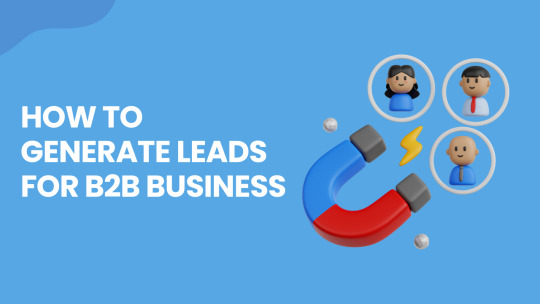
Leads are oxygen for every SaaS founder. But more important than volume is quality—prospects who match your Ideal Customer Profile (ICP), have budget, and are ready to start a real conversation. Below is a plain‑English guide to the three go‑to‑market (GTM) channels that deliver the highest‑quality B2B leads today, plus step‑by‑step tactics you can use this week.
1. Nail Your ICP Before You Do Anything Else
Think of your ICP as a filter. A clear filter means:
Higher response rates: You’re talking to people who actually care.
Shorter sales cycles: Budget and authority are already in place.
Lower customer‑churn: The product truly solves their pain.
Quick ICP checklist
Firmographics: industry, company size, funding stage.
Pain points: What problem keeps them up at night?
Buying triggers: hiring bursts, regulatory changes, new funding, etc.
Decision unit: who signs, who influences, who uses.
Document this in one page and share it with marketing and sales before launching any campaign.
2. Channel #1 – LinkedIn: Your Always‑On Prospecting Engine
Why LinkedIn? Conversion on LinkedIn’s native Lead Gen Forms averages 13 %, far above the 2 – 3 % most landing pages manage. Response rates to LinkedIn DMs (10 %) now double cold email averages. (sopro.io, expandi.io)
How to do it
Polish your profile & page: headline = pain you solve + proof.
Connect > engage > message: Send a non‑sales connection note, comment on two of their posts, then DM with a value nugget (e.g., benchmark PDF).
Post “demand‑net” content: quick wins, teardown threads, customer stories. Consistency beats virality.
Run Lead‑Gen ads when budget allows: keep questions minimal to protect that 13 % conversion.
Pro tip: Block 30 minutes daily for “relationship reps” (comments + DMs). Pipeline compounds.
3. Channel #2 – Webinars: Trust Builder at Scale
Why webinars? 73 % of B2B marketers call webinars their top source of high‑quality leads, with registration‑to‑attendee conversion up to 51 %. (hubilo.com, demandsage.com)
Webinar recipe
Step
What to do
Why it matters
Hook a pain‑point title
“Cut AWS spend 30 % in 30 days”
Drives sign‑ups
45‑minute live session
25 min teaching, 15 min demo, 5 min Q&A
Balances value & pitch
Interactive elements
Polls, chat, emoji reactions
Keeps attention
Fast follow‑up
Slides + replay link within 1 hour
Converts warm interest
Repurpose
Turn Q&A into LinkedIn posts, clip demo for YouTube
Extends shelf life
Aim for one webinar per month; most SaaS teams see cost‑per‑lead drop after the third one as content and promotion processes mature.
4. Channel #3 – Outbound Email & Cold Calling: Precision Strikes
Metric (2025)
Email
Cold Call
Average reply rate
8 – 10 % (saleshandy.com)
Connect‑to‑meeting ~2 % – 3 % (leadforensics.com)
Best days
Tue / Thu (emails)
Tue & Wed for demos (only-b2b.com)
Email tips
Personalize line 1: a custom first sentence increases replies by 30 %.
Short & bright: 50‑75 words, 1 ask, no fluff.
Follow‑up x3: a respectful thread boosts total replies by 28 %. (saleshandy.com)
Cold‑call tips
Research first: know their tech stack or recent news.
Pattern interrupt opener: “Can I have 27 seconds to tell you why I’m calling?”
Value nugget before pitch: “SaaS CFOs use us to slash invoice processing time by 40 %.”
Schedule the next step on call: calendar invite beats “I’ll email you.”
5. Orchestrate a Multi‑Touch Sequence
Day 0: LinkedIn connect.
Day 2: Personalized cold email.
Day 4: LinkedIn comment + DM with a relevant resource.
Day 6: Cold call referencing earlier touchpoints.
Day 10: Webinar invite or gated case study.
This blend raises familiarity, so each new touch “feels” warmer.
6. Measure, Learn, Repeat
KPI
Good starting benchmark
LinkedIn DM reply rate
10 %
Webinar reg‑to‑attend
35 % (shoot for 50 %+)
Cold email reply
8 %
Cold call connect‑to‑demo
2 %
Review these weekly, A/B one variable at a time (subject lines, call openers, landing‑page copy). When a channel beats benchmark, double down.
7. Key Takeaways
Start with a crystal‑clear ICP so every lead has real buying power.
Master LinkedIn, webinars, and targeted outbound—they’re the 2025 big three for SaaS.
Use multi‑touch sequences to warm prospects and stand out.
Track and tweak; small optimizations compound into big pipeline gains.
#google ads services in prayagraj#bbc marketing in prayagraj#seo services in prayagraj#digital marketing agency in prayagraj
2 notes
·
View notes
Text
Remarketing Strategies for Conversion Success

In the world of digital marketing, retaining a potential customer’s interest is often more challenging than acquiring it in the first place. Visitors may come to your website, explore your products or services, and then leave without making a purchase or inquiry. That’s where a well-planned remarketing strategy comes into play.
A remarketing strategy lets you reconnect with those prospective customers who previously engaged with your website, products, or services. It’s a powerful way to keep your brand visible and persuade them to return and convert — whether it's making a purchase, signing up for your newsletter, or booking a demo.
Why Remarketing Strategy Is Crucial for Your Business
Studies show that nearly 97% of first-time website visitors do not convert immediately. It’s not because they’re not interested — often, they’re simply not ready to buy, or they may be comparing options. Remarketing lets you stay at the forefront of their consideration, allowing you to:
✅ Boost Conversion Rate: Targeted messages based on visitor behavior can lift conversion rates by up to 50%. ✅ Strengthen Brand Recall: Staying visible through tailored ads makes it more likely for your prospective customer to remember you when it's time to buy. ✅ Improve Return on Ad Spend (ROAS): Remarketing typically converts at a lower cost per conversion than many other methods, yielding a strong return on your digital marketing investment.
Types of Remarketing Strategy to Implement
Your remarketing strategy can take different forms, depending on your goals and your customer’s journey. Here are a few popular methods to consider:
➥ Standard Remarketing: Shows tailored display ads to people who previously visited your website. ➥ Dynamic Remarketing: Displays products or services previously viewed by the visitor — a powerful way to bring back high-intent shoppers. ➥ Email Remarketing: Sends follow-up messages or promotions directly to the inbox of those who abandoned their carts or downloaded a lead magnet. ➥ Video Remarketing: Serves video content to viewers who previously engaged with your YouTube channel or video campaigns. ➥ Social Media Remarketing: Shows tailored messages on platforms like Facebook, Instagram, or LinkedIn, reconnecting you with a warm audience.
Best Practices for Remarketing Success
✅ Segment Your Audiences: Separate groups based on their actions — for example, product page viewers, add-to-cart but no checkout, or past purchasers — and customize messages for each. ✅ Create Compelling Ads: Your creative should reflect what the visitor was interested in previously. ✅ Set Clear Goals: Whether it's a lead form submission, a phone call, or a direct sale, be clear about what you want your visitor to do next. ✅ Limit Ad Frequency: To avoid ad fatigue, control how frequently your ads appear. ✅ Analyze and Optimize: Monitor key metrics, split-test messages, and fine-tune your campaigns for maximum performance.
2 notes
·
View notes
Text
Mastering Digital Marketing Strategies: Boosting Your Business's Online Presence
In today's highly competitive digital landscape, having a well-defined marketing strategy is crucial for businesses aiming to thrive online. Effective digital marketing strategies can enhance brand visibility, attract targeted audiences, and drive conversion rates. This article will explore critical digital marketing strategies and provide insights on optimizing your online presence for maximum success. Get ready to master the art of digital marketing and elevate your business to new heights.
Keyword Research: The Foundation of SEO
One of the cornerstones of a successful digital marketing strategy is search engine optimization (SEO). Conduct thorough keyword research to identify relevant search terms related to your business. Use tools like Google Keyword Planner, SEMrush, or Moz to find keywords with high search volume and low competition. Incorporate these keywords strategically throughout your website, content, and metadata to improve your organic search rankings and attract targeted traffic.
Engaging Content Creation
Content remains king in the digital realm. Craft high-quality, engaging content that provides value to your target audience. Develop a content calendar to ensure consistent delivery across various channels, including blog posts, articles, videos, infographics, and social media posts. Use your keywords naturally within your content to optimize for users and search engines. Share your content on relevant platforms, and encourage social sharing to increase visibility and generate organic traffic.
Social Media Marketing
Leverage the power of social media platforms to expand your brand's reach and engage with your target audience. Identify the platforms where your audience is most active and create compelling profiles. Share valuable content, interact with followers, and participate in relevant conversations. Utilize social media advertising options to amplify your message and target specific demographics. Regularly analyze the performance of your social media efforts to optimize your strategy and maximize results.
Email Marketing Campaigns
Email marketing remains a highly effective tool for nurturing leads and converting them into customers. Build an email list by offering valuable incentives, such as exclusive content or discounts. Segment your email list based on demographics, interests, or previous interactions to deliver personalized and relevant content. Craft compelling email campaigns with attention-grabbing subject lines and visually appealing designs. Monitor and analyze email metrics to refine your approach and improve conversion rates.
Influencer Partnerships
Collaborating with influencers in your industry can significantly boost your brand's visibility and credibility. Identify influencers whose values align with your brand and whose audience matches your target market. Contact them for partnerships, such as sponsored posts or product reviews. Ensure that the collaboration feels authentic and provides value to its audience. Track the results of influencer campaigns to gauge their effectiveness and adjust your approach as needed.
Pay-Per-Click (PPC) Advertising
PPC advertising allows you to reach your target audience through ads displayed on search engines and other platforms. Conduct thorough keyword research to identify relevant keywords for your campaigns. Create compelling ad copy and utilize captivating visuals to attract clicks. Set clear goals, monitor the performance of your campaigns, and make data-driven optimizations to maximize your return on investment.
Website Optimization and User Experience
A user-friendly website that offers a seamless experience is essential for retaining visitors and driving conversions. Optimize your website's loading speed, mobile responsiveness, and navigation. Ensure your website communicates your value proposition, features intuitive design, and includes clear calls to action. Regularly test and analyze your website's user behavior to identify improvement areas and increase conversion rates.
Conclusion
By implementing these digital marketing strategies, you can significantly enhance your business's online presence, attract targeted audiences, and drive conversions. Remember to conduct thorough keyword research, create engaging content, leverage social media, utilize email marketing, collaborate with influencers, implement PPC advertising, and optimize your website for a seamless user experience. Consistency, analysis, and adaptation are essential to mastering digital marketing.
2 notes
·
View notes
Text
Best Influencer Marketing Strategies: A 1000-Word Guide
Influencer advertising and marketing has come to be one of the best strategies for manufacturers seeking to construct consciousness, growth engagement, and pressure conversions. As customers increasingly more accept as true with hints from people they respect over conventional classified ads, leveraging influencers can create genuine connections and compelling narratives round products and services.
Best Influencer Marketing Strategies

This guide will explore influencer advertising strategies in-depth, masking how to pick out influencers, marketing campaign making plans, execution, and measuring success.
1. Understanding Influencer Marketing
At its core, influencer advertising and marketing is a collaboration among brands and individuals who have a faithful following on social media platforms like Instagram, TikTok, YouTube, and X (formerly Twitter). These influencers can sway purchasing selections because of their authority, understanding, or relationship with their audience.
Influencer advertising and marketing techniques usually goal to:
Increase emblem awareness
Promote new services or products
Drive site visitors to web sites or bodily shops
Encourage conversions or app installs
The key to fulfillment is strategic alignment among logo values and influencer personality.
2. Identifying the Right Influencers
Not all influencers are created identical. Choosing the proper influencer calls for a thoughtful evaluation of several factors:
a. Audience Relevance
Ensure the influencer's target market aligns with your target marketplace. For instance, a vegan skincare emblem could advantage greater from a beauty influencer who promotes cruelty-loose products than from a tech influencer.
B. Engagement Rate
High follower count number doesn’t always mean high engagement. Analyze likes, feedback, stocks, and the nice of interactions. A micro-influencer (10K–100K fans) would possibly have extra engaged followers than a celeb influencer.
C. Authenticity
Look for influencers who create actual content and percentage proper tales. Followers are short to notice when a collaboration feels compelled or inauthentic.
D. Platform Fit
Different platforms serve unique content types. For instance:
Instagram is super for visuals and product showcases.
TikTok is good for short, innovative, and viral films.
YouTube fits long-form storytelling or evaluations.
Blogs paintings nicely for exact evaluations and search engine optimization-pushed campaigns.
3. Setting Clear Goals and KPIs
Define your marketing campaign goals prematurely. Are you aiming for focus, engagement, or conversions?
Common KPIs consist of:
Reach and impressions
Engagement price (likes, comments, shares)
Click-via charge (CTR)
Conversion fee (income, app installs, sign-ups)
Follower increase
These metrics will help degree the campaign's overall performance and manual future strategies.
Four. Types of Influencer Campaigns
a. Sponsored Content
Brands pay influencers to create posts, testimonies, or motion pictures providing their services or products. The content material is commonly labeled as "subsidized" or “paid partnership.”
b. Product Seeding
This involves sending loose products to influencers within the wish they’ll publish approximately them. While there’s no guaranteed insurance, it’s a low-threat way to construct relationships and earn natural merchandising.
C. Giveaways and Contests
Influencers host giveaways to force engagement and brand attention. This tactic is specifically powerful for increasing followers and reach in a quick time.
D. Affiliate Marketing
Influencers sell merchandise the usage of unique referral hyperlinks or cut price codes. They earn a commission for each sale generated, making it a overall performance-based totally approach.
E. Brand Ambassadorships
Long-time period partnerships wherein influencers represent a brand continually over the years. This allows construct deeper agree with and more sustained visibility.
Five. Crafting the Campaign Brief
A specified quick ensures influencers recognize your expectations and may supply aligned content. Include the following factors:
Campaign objectives
Key messages and hashtags
Visual fashion and tone of voice
Mandatory call-to-moves (e.G., “Swipe up to shop”)
Posting schedule and time limits
Disclosure requirements (#ad, #sponsored)
While hints are critical, permit influencers innovative freedom to hold authenticity.
6. Budgeting and Compensation
Influencer expenses range broadly based on reach, engagement, content layout, and platform. Micro-influencers may price a few hundred bucks per publish, while top-tier influencers can command thousands or more.
Also don't forget:
Production prices (e.G., video editing)
Giveaway prizes
Paid amplification (boosting influencer content material through commercials)
Negotiate pretty, and do not forget providing a mix of financial compensation, free merchandise, and affiliate opportunities.
7. Legal Considerations and FTC Compliance
Influencer marketing is situation to advertising policies. In the U.S., the Federal Trade Commission (FTC) requires that influencers truely expose sponsored content. Typical disclosure techniques encompass:
#ad or #sponsored at the start of captions
Verbal disclosures in motion pictures
Clear labeling of paid partnerships
Ensure contracts define deliverables, utilization rights, deadlines, and confidentiality clauses to guard both events.
8. Amplifying Influencer Content
Once content is stay, maximize its reach through:
Sharing to your brand’s social media channels
Featuring it in e-mail advertising and marketing
Embedding movies or opinions for your website
Running paid ads using influencer content material (with permission)
This technique extends the content material’s lifespan and boosts ROI.
Nine. Measuring and Analyzing Results
Use monitoring equipment and analytics to evaluate the overall performance of your influencer campaigns. Key metrics consist of:
Engagement (likes, comments, shares)
Reach and impressions
Website site visitors (via UTM hyperlinks or Google Analytics)
Conversion metrics (sales, downloads, sign-ups)
Some famous influencer advertising gear consist of:
Upfluence
GRIN
AspireIQ
HypeAuditor
CreatorIQ
Use this information to become aware of top-acting influencers and content material formats for future campaigns.
10. Building Long-Term Relationships
Treat influencers as partners, now not simply content material creators. Long-time period collaborations foster:
Greater logo loyalty
More actual endorsements
Improved audience consider
Engage with their content, offer everyday feedback, and contain them in product development or distinct occasions to deepen the connection.
11. Trends in Influencer Marketing
To live in advance, hold an eye fixed on rising trends:
Nano-influencers (1K–10K fans) are gaining traction for hyper-local engagement.
AI influencers like Lil Miquela are starting new frontiers in digital advertising.
Live purchasing via platforms like TikTok Shop is blurring the road among content and commerce.
User-generated content (UGC) from influencers is being repurposed in paid advertisements and branded pages.
Best strategies for influencer outreach in 2025
#digital marketing#social media optimization#social media marketing#Best Influencer Marketing Strategies
2 notes
·
View notes
Text
Excerpt from this story from Grist:
Negotiators wrapped up the fourth round of formal discussions over the United Nations’ global plastics treaty early on Tuesday morning, inching closer to a final agreement that’s intended to “end plastic pollution.”
Delegates made important progress on the treaty, the final version of which is due by the end of the year. They pared down a lengthy draft of the text and agreed on a formal agenda for “intersessional” work ahead of the next — and final — meeting, in Busan, South Korea, scheduled for November 25. That work will involve critical issues around funding the treaty’s provisions and identifying plastic-related chemicals that should be restricted.
The agenda, however, doesn’t mention the elephant in the room: whether and how the treaty will limit plastic production.
“Nothing happened that was particularly surprising, but this outcome is still quite demoralizing,” said Chris Dixon, an ocean campaign leader for the nonprofit Environmental Investigation Agency who attended the talks. Other groups called the outcome “disappointing” and said the negotiations had been “undermined by deep-rooted industry influence.”
Dixon and other environmental advocates have spent the past three meetings fighting for a treaty that addresses the “full life cycle” of plastics — meaning one that goes beyond waste management to limit the amount of plastic that’s made in the first place.
The world already produces more than 400 million metric tons of plastic per year, and fossil fuel companies are planning to dramatically increase that number over the next few decades. Plastics have been described as the fossil fuel industry’s “plan B” as the world pivots away from using oil and gas in transportation and electricity generation. This could have dire implications not only for plastic pollution but for the climate; according to a recent study, greenhouse gas emissions from growing plastic production could eat up one-fifth of the world’s remaining carbon budget by 2050.
Just because production limits aren’t on the agenda for ad hoc working groups, however, doesn’t mean they’re out of the treaty; it just means delegates may arrive in Busan less prepared to discuss technical concepts related to plastics manufacturing. Language about the “full life cycle” of plastics is still in the treaty’s mandate — which countries agreed on in 2022 — and throughout the draft text. Countries can also host unofficial discussions on the topic between now and November.
There’s already widespread support for addressing plastic production in the treaty. Dozens of countries supported a statement presented by Rwanda and Peru last week saying that a global plastic reduction target should be “a North Star” for the treaty. The paper suggested reducing production by 40 percent below 2025 levels by 2040. Another declaration, published on Monday and signed by 28 countries, called for the treaty to “achieve sustainable levels of production of primary plastic polymers.”
9 notes
·
View notes
Text
Ad Creation Made Easy: Step-by-Step Guide for Beginners

Creating ads may seem overwhelming if you're just starting, but with the right approach and tools, ad creation can become an accessible and effective way to reach your audience, drive traffic, and boost conversions. Whether you're a business owner, content creator, or marketer, understanding the basics of ad creation is crucial to maximizing your digital marketing efforts. This step-by-step guide will walk you through the essentials of ad creation, making it easy for beginners to craft compelling, results-driven ads.
Step 1: Understand Your Audience
Before you create an ad, it’s crucial to understand who you’re targeting. Knowing your audience helps you design more relevant and compelling ads that will resonate with users. Consider the following factors:
Demographics: Age, gender, location, and income level can influence how your ad is perceived.
Interests: What are your audience's hobbies, preferences, and behaviors?
Step 2: Define Your Goal

What is the goal you want to achieve with your advertisement? Clearly defining your objective is vital for successful ad creation, including keyword-based ad campaigns. Your goal might fall into one of the following categories:
Brand Awareness: Let people know about your product, service, or content.
Lead Generation: Capture contact information from potential customers.
Step 3: Choose the Right Ad Format
Different platforms have different ad formats that may work better depending on your goal. Here are a few popular platforms and the ad formats you can use:
Facebook & Instagram Ads: These platforms allow a variety of ad types, including image ads, carousel ads (multiple images or videos), video ads, and story ads. They’re great for visual content and social engagement.
Step 4: Craft a Compelling Message
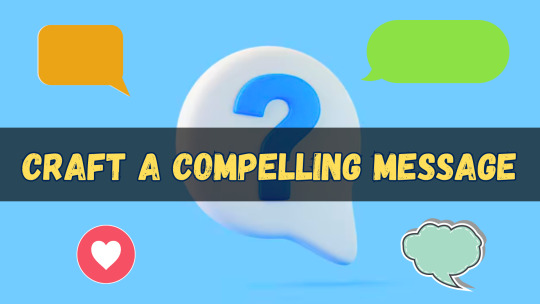
The content of your ad—its copy and visuals—plays a significant role in its success. Here are some suggestions for creating impactful ad copy:
Keep It Simple: People have limited attention spans, so make sure your ad is concise and to the point. Focus on delivering a message quickly and clearly.
Highlight the Benefits: Explain how your product or service solves a problem or meets a need. Use language that appeals to your audience's desires or pain points.
Step 5: Design Your Visual Elements
A visually appealing ad will draw attention and increase the likelihood that users will click or engage. Consider these design tips:
Keep It Simple:Avoid cluttering your ad with excessive text or images. Instead, concentrate on delivering a single, clear message or offer.
Brand Consistency: Use your brand’s colors, logo, and fonts to maintain consistency across all your ads.
Step 6: Optimize Your Ad for Performance
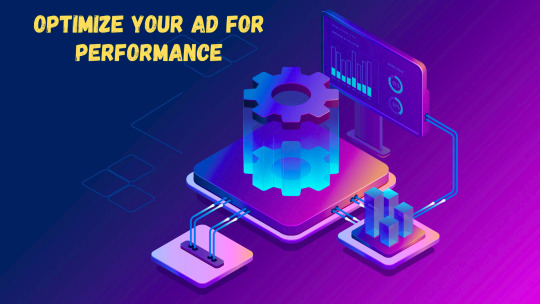
Once your ad is live, it’s important to track its performance and make necessary adjustments. Important metrics to track include:
Click-through Rate (CTR):The proportion of individuals who clicked on your ad after viewing it. A higher CTR signifies that the ad is performing well.
Conversion Rate: The percentage of users who took the desired action (e.g., made a purchase, signed up) after clicking your ad.
Step 7: Test and Iterate
Ongoing testing and optimization are essential for achieving success in ad creation. A/B testing (comparing two versions of an ad) can help you determine what resonates best with your audience. Test different elements like:
Headlines
Call-to-Action
Images and Video Thumbnails
You can also watch: Effortless & Smart Ad Creation Made Simple with AdsGPT!
youtube
Conclusion
Ad creation doesn’t have to be a complicated process. By following these simple steps—understanding your audience, setting clear objectives, selecting the right platform and format, crafting compelling ad copy, and optimizing based on performance—you can do ad creation that effectively engage your audience and meet your marketing goals. Remember, successful ads are the result of constant testing and refinement, so don’t be afraid to experiment and learn as you go.
3 notes
·
View notes
Text
DigiMark — A Sleek Webflow Template for Modern Marketers
Looking to launch your marketing or advertising agency online with confidence and style? The DigiMark Webflow template is crafted for ambitious digital marketers, ad agencies, and creative studios that want to stand out without coding a single line.

Who Is DigiMark For?
Whether you’re a solo consultant, a fast-growing agency, or a creative team seeking a sleek online footprint, DigiMark offers the perfect balance of aesthetics, performance, and customization. If you’re a:
Digital marketing agency
Creative ad studio
Freelance marketer or consultant
SEO/SEM professional
Startup offering branding services
Then DigiMark is tailored for you. 💼
What Makes DigiMark Stand Out?
Unlike generic templates, DigiMark was designed with agency workflows and marketing psychology in mind. It doesn’t just look good — it performs. With smooth animations, clearly defined content sections, and persuasive calls-to-action, it’s built to convert and impress.
The thoughtfully designed Case Study pages give you the opportunity to showcase results and build credibility with prospective clients. Meanwhile, the integrated Careers page helps attract top talent with a clean and appealing layout. 🌟
Built for Webflow, Loved by Marketers
Using Webflow as its foundation, DigiMark gives users the power of a professional-grade website with none of the technical complexity. Whether you’re launching from scratch or upgrading an outdated site, this template gives you everything needed to hit the ground running.
With Webflow’s CMS features, you can update content quickly without compromising design integrity. Focus more on your campaigns — and less on managing your site.
Pro Tip: How to Use DigiMark Like a Pro
Want to make the most of DigiMark? Here are some ideas:
💬 Populate the blog with thought leadership content in your niche.
🎯 Highlight performance metrics in your case studies.
🎨 Match the color scheme to your brand in seconds using global styles.
✍️ Use the contact form to route leads directly to your CRM.
Ready to Impress Clients?
Don’t let an underwhelming website hold you back. Whether you’re pitching big brands or building local partnerships, DigiMark gives your agency the digital edge it deserves — all powered by the flexibility of Webflow.
Explore the template here: 👉 DigiMark Marketing & Advertising Template
#webflow#webflowtemplates#websitetemplate#template#web design#ui ux design#webflowdesign#businesswebsite#web development#degital marketing
1 note
·
View note
Text
Conversion Rate Optimization (CRO): Boosting Your Website's Effectiveness
Conversion Rate Optimization (CRO) is a data-driven strategy focused on increasing the percentage of website visitors who take a desired action—whether it’s making a purchase, signing up for a newsletter, or downloading a resource. CRO is one of the most impactful ways to enhance your website’s performance and improve the return on investment (ROI) for your digital marketing efforts. In this guide, we’ll walk through the essentials of CRO, from understanding its importance to implementing strategies and tools for optimizing conversion rates.
1. What is Conversion Rate Optimization (CRO)?
CRO refers to the process of improving the conversion rate on your website or landing page. A conversion is any action you want a visitor to take, such as:
Making a purchase (for e-commerce websites).
Filling out a contact form (for lead generation).
Signing up for a newsletter.
Downloading an eBook, app, or other resources.
CRO involves using testing, analysis, and optimization techniques to enhance user experience (UX) and increase the likelihood of visitors completing those desired actions.
Key Metrics for CRO:
Conversion Rate: The percentage of website visitors who complete the desired action.
Formula: (Total Conversions / Total Visitors) × 100
Bounce Rate: The percentage of visitors who leave your site after viewing only one page. High bounce rates can indicate poor UX or irrelevant traffic.
Average Session Duration: The amount of time visitors spend on your site. Longer sessions can indicate more engagement and better chances of conversion.
Exit Rate: The percentage of visitors who leave your site from a specific page. High exit rates on key pages (like checkout or sign-up forms) suggest areas to optimize.
2. The Importance of CRO for Digital Marketing Success
CRO is crucial for maximizing the effectiveness of your website and digital marketing campaigns. Even small improvements in conversion rates can significantly increase revenue without the need for additional traffic. Here are some key reasons why CRO should be a priority:
Maximizing Traffic Efficiency: By optimizing your conversion rates, you can make better use of the traffic you’re already attracting. Rather than spending more on ads or content marketing to bring in more visitors, CRO ensures that more of your current traffic converts into leads or sales.
Improved ROI: CRO can lead to higher revenue and reduced cost-per-acquisition (CPA), providing a more efficient and profitable use of your marketing budget.
Better User Experience: CRO often involves improving the user experience (UX) of your site, which can reduce bounce rates, increase engagement, and improve customer satisfaction.
Data-Driven Decision Making: CRO is a continuous process that relies on data and testing. By analyzing user behavior, you gain valuable insights into what works and what doesn’t on your site.
3. Understanding the CRO Process
The CRO process generally involves the following key steps:
Research and Data Collection: Gather data to understand how visitors are interacting with your site. This involves tools like Google Analytics, heatmaps, and user session recordings.
Identify Conversion Barriers: Analyze where visitors are dropping off or getting stuck. This could be anything from slow page load times to confusing navigation or poor calls-to-action (CTAs).
Form Hypotheses: Based on your research, hypothesize what changes could improve the user experience and conversion rates. For example, if users are dropping off at checkout, you might hypothesize that simplifying the process or offering more payment options will increase conversions.
A/B Testing: Run experiments by testing different variations of pages, forms, CTAs, and other elements. A/B testing allows you to compare the performance of two different versions of a page to determine which one results in higher conversions.
Implement Changes: Once you have enough data from your tests, implement the changes that have proven to be successful.
Monitor and Iterate: CRO is an ongoing process. Continuously monitor key metrics and keep testing new hypotheses to further optimize your site’s performance.
4. CRO Strategies and Techniques
There are a variety of CRO strategies and techniques that can help you increase conversion rates. The best approach depends on your business model, audience, and goals. Below are some of the most effective tactics for CRO:
1. Improving Website Load Speed
Website speed is a critical factor in both user experience and conversion rates. Slow-loading websites can lead to high bounce rates and frustrated visitors. Use tools like Google PageSpeed Insights or GTmetrix to test and optimize your website's load speed.
Tips to improve speed:
Compress and optimize images.
Minimize JavaScript and CSS files.
Use a content delivery network (CDN) to serve content faster.
2. Optimizing User Experience (UX) and Design
A user-friendly and intuitive website design can significantly impact conversions. Make sure your website is visually appealing, easy to navigate, and responsive (mobile-friendly).
Key UX Elements to Optimize:
Clear Navigation: Make it easy for users to find what they’re looking for without frustration.
Mobile Optimization: Ensure your website is fully optimized for mobile users since a significant amount of traffic comes from mobile devices.
CTA Optimization: Make calls-to-action (CTAs) clear, compelling, and easy to find. Use contrasting colors, action-oriented text, and prominent placement.
Trust Signals: Display trust signals like customer reviews, secure payment badges, or social proof to reassure visitors and build trust.
3. Simplifying Forms and Checkout Process
Long or complicated forms can cause visitors to abandon their actions. Simplify the checkout or lead capture process by:
Reducing the number of form fields.
Offering guest checkout options (for e-commerce).
Using progress bars or multi-step forms to show users how far along they are in the process.
4. A/B Testing
A/B testing is one of the most powerful methods for CRO. It involves testing two or more versions of a webpage or element (e.g., CTA buttons, headlines, images) to see which one performs better in terms of conversions.
What to Test:
Headlines: Test different headlines to see which one resonates more with your audience.
CTA Buttons: Experiment with button text, size, color, and placement to improve click-through rates.
Product Images: For e-commerce, test different product images or even the angle from which products are shown.
Pricing Strategy: Test different pricing models or discounts to see what drives more sales.
5. Leveraging Social Proof
Social proof is the psychological phenomenon where people are more likely to take an action if they see others doing it. Incorporating elements of social proof on your website can significantly increase conversions.
Examples of Social Proof:
Customer Reviews and Testimonials: Display positive reviews, ratings, and testimonials from satisfied customers.
User-Generated Content: Showcase photos or videos from customers using your product.
Case Studies: Highlight in-depth success stories to demonstrate how your product or service has helped others.
Social Media Feeds: Display your social media activity or follower counts to show that people are engaging with your brand.
6. Personalization
Personalizing the user experience on your website can drive higher conversion rates. By tailoring content, offers, and products to individual users based on their behavior or demographic data, you can make the experience feel more relevant.
Examples of Personalization:
Product Recommendations: Suggest products based on past browsing or purchase history.
Dynamic Content: Show different content to users based on location, device type, or referral source.
Exit-Intent Popups: Trigger exit-intent popups with personalized offers or incentives to persuade users not to leave the page.
7. Implementing Retargeting Campaigns
Retargeting is the practice of displaying ads to users who have previously visited your site but didn't convert. By staying top-of-mind with these users and offering special deals, you can increase the chances of conversion.
5. CRO Tools and Resources
There are several tools that can help you implement and track your CRO efforts:
Google Analytics: Provides insights into user behavior, conversion funnels, and key metrics like bounce rates and exit rates.
Hotjar: Offers heatmaps, session recordings, and surveys to help you understand how users interact with your website.
Optimizely: A popular A/B testing platform that helps you experiment with different versions of your website to optimize conversions.
Crazy Egg: Provides heatmaps, A/B testing, and other tools to analyze user behavior and improve site performance.
Unbounce: A landing page builder that allows for easy A/B testing and optimization of landing pages.
6. Measuring CRO Success
Once you've implemented your CRO strategies, it’s important to measure their success. Focus on the following metrics:
Conversion Rate: The most direct indicator of success.
Bounce Rate: A reduction in bounce rate indicates improved relevance and engagement.
Time on Page: Increased time spent on your pages can show that users are finding your content valuable.
Revenue per Visitor (RPV): Track how much revenue you're generating per visitor, and use it to measure overall profitability.
Best Digital Marketing Course In Raipur -
Webfame Digital Marketing Academy is a leading Internet Marketing Training provider in Raipur-Chhattisgarh for Corporate, Professionals, Entrepreneurs and Students.We Provide End-to-End Live Classroom training for Students,Executives and Entrepreneurs. We teach marketers how to reach right targeted audience with lower cost of acquisition in the best way possible.
Conclusion
Conversion Rate Optimization is a powerful way to increase the effectiveness of your website and maximize the ROI of your digital marketing efforts. By focusing on improving user experience, testing different variations, and using data-driven insights, businesses can boost conversions and drive higher revenue. CRO is a continuous process that requires ongoing testing, analysis, and optimization to achieve sustained growth. With the right tools, strategies, and commitment, you can significantly improve your website's performance and turn more visitors into loyal customers.
2 notes
·
View notes
Text
Guerrilla Marketing vs. Traditional Marketing: What Sets Them Apart?
In a world full of advertisements, guerrilla marketing is a novel and unorthodox approach for firms looking to stand out. The tried-and-true methods of traditional marketing stand in stark contrast to this daring, surprising, and frequently memorable approach. What is guerilla marketing, though, and how is it different?
Let’s dive into the unique, attention-grabbing world of guerrilla marketing and how it differs from traditional approaches.
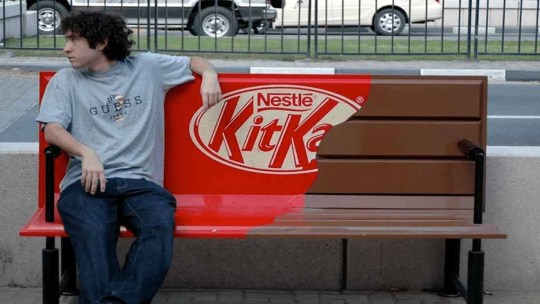
What is Guerrilla Marketing?
Guerrilla marketing is a technique that uses unexpected methods, inventiveness, and surprise to advertise goods and services. It emphasizes surprise and creativity above large funds in order to have a significant impression, drawing inspiration from guerilla warfare strategies. Guerrilla marketing initiatives usually focus more on memorable, creative moments that engage viewers personally than they do on monetary investment.
For startups or smaller companies hoping to have a significant effect without the resources of larger organizations, this approach is especially well-suited. But when they want to stand out from the crowd and leave a lasting impression, even well-known firms turn to guerilla marketing.
Key Characteristics of Guerrilla Marketing
Thinking outside the box and being unorthodox are key components of guerilla marketing. Here are a few distinguishing traits:
Low Budget, High Impact: Guerrilla marketing strategies often rely on creativity rather than cash. The most memorable campaigns usually come from small budgets combined with big ideas.
Element of Surprise: By being unexpected, guerrilla marketing grabs attention and builds curiosity. Whether it's a flash mob, an art installation, or a clever street ad, these campaigns stand out because they’re unpredictable.
Engagement Focused: Guerrilla marketing isn’t just about one-way messaging; it’s about engaging the audience. Many campaigns involve an interactive element that encourages people to participate or share the experience on social media.
Viral Potential: These campaigns are designed to be sharable. The more unique and memorable the campaign, the higher the chance it will be shared across social media, multiplying its reach organically.
Connection with the Audience: Guerrilla marketing often operates in spaces that allow it to connect with the audience directly—be it on the street, at events, or in unexpected venues. This fosters a personal connection, making the brand feel more relatable.
What is Traditional Marketing?
The kind of advertising that has been used for decades and usually calls for a large budget is known as traditional marketing. It covers media like billboards, direct mail, print ads, radio ads, and TV commercials. Exposure to audiences in a predictable and recurring manner is the foundation of traditional marketing, which aims to gradually increase brand memory and awareness.
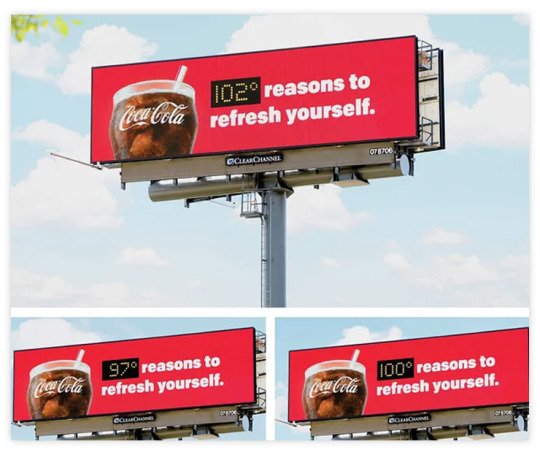
Key Characteristics of Traditional Marketing
While traditional marketing may lack the “wow factor” of guerrilla tactics, it remains essential for businesses of all sizes:
Predictability and Structure: Traditional marketing channels follow established formats and schedules. This consistency makes it easy for brands to plan and measure results.
Broader Reach, Higher Budget: Traditional campaigns are generally expensive, but they reach a broad audience, which is why they’re often used by large companies with the budget for mass exposure.
Less Personal Engagement: Traditional marketing reaches a wide audience but lacks a personal connection with individual customers, as it’s more focused on delivering the brand message than engaging directly.
Reliability and Familiarity: Traditional marketing feels trustworthy to consumers who are used to seeing brands advertised on TV, radio, or in print, making it a reliable choice for brand building and product launches.
Tangible Metrics: Traditional marketing offers clear, quantitative ways to measure success, from viewership and readership numbers to conversion rates, making it easier to evaluate ROI.
Guerrilla Marketing vs. Traditional Marketing: Key Differences
Traditional marketing and guerilla marketing each have special benefits and are appropriate for certain objectives. Below is a summary of their main distinctions:
Cost and Resource Allocation
Guerrilla Marketing: Requires minimal resources and is based on creativity and cleverness. This makes it ideal for brands with smaller budgets.
Traditional Marketing: Requires significant financial resources for ad space, production costs, and ongoing placements, making it a long-term financial commitment.
Audience Impact
Guerrilla Marketing: Aims to create a memorable impression quickly and is often limited to a particular location or event, leading to high-impact moments.
Traditional Marketing: Seeks brand exposure over time, aiming for steady growth in brand awareness through repeat impressions.
Longevity and Timing
Guerrilla Marketing: Campaigns are often short-term, focusing on the power of a one-time surprise to leave a lasting impression.
Traditional Marketing: Involves a long-term approach, relying on regular and repeated exposure to reach its target audience consistently.
Audience Engagement
Guerrilla Marketing: Encourages active participation and emotional engagement. Many campaigns go viral precisely because people enjoy engaging with them and sharing their experiences.
Traditional Marketing: Primarily a one-way communication channel that broadcasts a message without involving the audience directly.
Metrics and Measurement
Guerrilla Marketing: The success of these campaigns is harder to measure and is often based on social media reach, word-of-mouth, or brand sentiment.
Traditional Marketing: More trackable with defined metrics like reach, ratings, impressions, and sales impact, making ROI easier to calculate.
Real-World Examples
To illustrate how these two approaches work, here are some notable examples:
Guerrilla Marketing: The ice bucket challenge went viral on social media in 2014 and helped raise more than $115 million for ALS. In order to start a viral chain reaction that went throughout the world, the campaign urged participants to dump a bucket of cold water over their heads and nominate others to do the same.
Traditional Marketing: Traditional marketing is exemplified by Coca-Cola's "Share a Coke" campaign. To encourage sharing, the company placed people's names on bottles and sent them out all across the world. The campaign's main tools for spreading the word and boosting sales were billboard, print, and television advertising.
Which Approach is Right for You?
The choice mostly depends on the brand, the campaign objectives, and the target audience, even if both standard and guerilla marketing offer special benefits. Guerrilla marketing provides a way for new or smaller brands to create a huge impression on a shoestring. For well-known brands or businesses with larger consumer bases, traditional marketing offers a dependable, continuous method of establishing enduring brand recognition.
Combination of Both: To strike a balance between effect and reach, many firms today combine traditional and guerilla marketing. For a more all-encompassing strategy, they might, for instance, start a surprise event (guerrilla) and then use TV commercials and social media to spread the word (conventional).
Both standard and guerilla marketing provide distinctive approaches to engaging customers. Guerrilla marketing lives on innovation, surprise, and the force of the unexpected, whereas traditional marketing offers consistency and broad reach.
Brands will have even more chances to combine these tactics as digital platforms develop further, producing memorable ads that appeal to consumers' emotions and reach a wider audience. The correct marketing plan will make your brand memorable, whether it's through a daring street campaign or a regular TV appearance.
3 notes
·
View notes
Text
Google Ads Help to Grow Your Buisness
Mastering Google Ads: A Comprehensive Guide
As a leading Digital Marketing Agency with extensive experience in Google Ads, we understand the immense potential this platform offers for businesses of all sizes. Whether you're a small startup or an established enterprise, leveraging Google Ads effectively can be the key to driving growth, increasing brand visibility, and maximizing ROI. In this article, we’ll guide you through the intricacies of Google Ads, from setting up your first campaign to advanced optimization techniques.
1. Introduction to Google Ads
Google Ads is a powerful online advertising platform that allows businesses to reach their target audience through a variety of ad formats. Whether your goal is to generate leads, increase sales, or build brand awareness, Google Ads provides a range of tools and strategies to achieve your objectives.
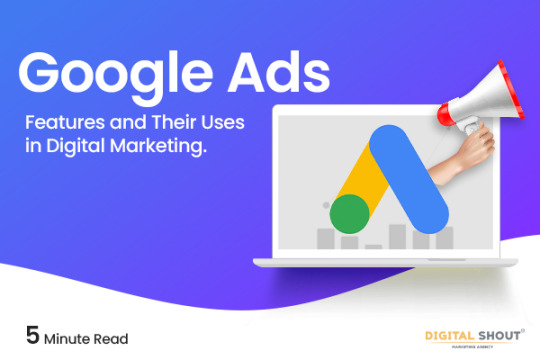
2. How Google Ads Works
The Pay-Per-Click (PPC) Model: Google Ads operates on a Pay-Per-Click (PPC) model, meaning you only pay when someone clicks on your ad. This model ensures that your advertising budget is spent on potential customers who are actively interested in your products or services.
Ad Auction Process: Every time a user performs a search, Google Ads runs an auction to determine which ads will appear and in what order. The ad rank is determined by a combination of your bid amount, the quality of your ad, and the expected impact of your ad extensions.
Ad Formats: Google Ads offers a variety of ad formats, including:
Search Ads: Text ads that appear on Google search results pages.
Display Ads: Visual ads that appear on websites within Google’s Display Network.
Video Ads: Ads that appear on YouTube and other video partners.
Shopping Ads: Product-based ads that appear in Google Shopping results.
3. Setting Up a Google Ads Campaign
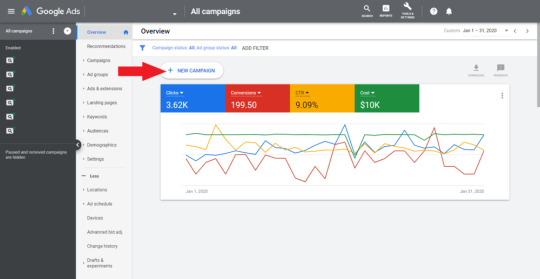
Creating an Account: To start using Google Ads, you need to create an account. This involves providing basic information about your business, such as your website and payment details. Once your account is set up, you can begin creating campaigns.
Choosing Campaign Objectives: Google Ads allows you to choose from several campaign objectives, such as Sales, Leads, or Website Traffic. Selecting the right objective is crucial, as it determines how your ads are optimized and where they appear.
Keyword Research and Selection: Effective keyword research is the foundation of a successful Google Ads campaign. Tools like Google’s Keyword Planner can help you identify relevant keywords that your potential customers are searching for. Selecting the right keywords ensures that your ads are shown to the right audience.
Ad Creation and Targeting: Writing compelling ad copy is essential for attracting clicks. Your ads should be clear, concise, and relevant to the user’s search intent. Google Ads also offers extensive targeting options, allowing you to reach your audience based on demographics, location, interests, and more.
Bidding Strategies: Google Ads provides various bidding strategies, including Manual CPC (Cost-Per-Click), Enhanced CPC, and Target CPA (Cost-Per-Acquisition). The choice of strategy depends on your campaign goals and budget. For example, Target CPA is ideal for campaigns focused on generating conversions.
4. Optimizing Google Ads Campaigns
Tracking and Measuring Performance: To assess the effectiveness of your Google Ads campaigns, it's crucial to set up conversion tracking. This allows you to measure actions taken by users after clicking on your ad, such as purchases or sign-ups. Key metrics to monitor include Click-Through Rate (CTR), Conversion Rate, and Quality Score.
A/B Testing: A/B testing, also known as split testing, involves running two or more variations of an ad to see which performs better. This can help you refine your ad copy, headlines, and calls-to-action to improve overall performance.
Budget Management: Effective budget management ensures that you maximize your ad spend without overspending. Google Ads allows you to set daily budgets and adjust them based on campaign performance. Allocating your budget to high-performing campaigns can lead to better results.
Continuous Optimization: Google Ads is not a “set it and forget it” platform. Regularly reviewing and optimizing your campaigns is essential for maintaining and improving performance. This might involve adjusting bids, refining keywords, or updating ad copy based on what’s working best.
5. Common Challenges and How to Overcome Them
High Competition and CPC: In competitive industries, the cost-per-click (CPC) can be high. To compete effectively, focus on improving your Quality Score by creating highly relevant ads and landing pages. Additionally, consider targeting long-tail keywords with less competition.
Ad Fatigue: Over time, users may become less responsive to your ads, a phenomenon known as ad fatigue. To combat this, regularly update your ad creatives and rotate different versions to keep your audience engaged.
Low Click-Through Rates (CTR): If your ads are not receiving enough clicks, it could indicate that they are not resonating with your audience. Improving your ad relevance, crafting stronger calls-to-action, and testing different headlines can help increase CTR.
Budget Management Issues: It’s easy to overspend on Google Ads if you’re not careful. Regularly monitoring your spend and adjusting your budgets based on performance is crucial. Focus on campaigns that deliver the best ROI and reduce spending on underperforming ones.
6. Advanced Google Ads Strategies
Remarketing: Remarketing allows you to target users who have previously visited your website but didn’t convert. By showing them tailored ads as they browse other websites, you can re-engage them and increase the likelihood of conversion.
Using Google Ads Extensions: Ad extensions provide additional information about your business, such as contact details, additional links, or promotional offers. Using extensions can improve your ad’s visibility and performance by making it more informative and appealing to users.
Automated Bidding and Smart Campaigns: Google’s automated bidding strategies use machine learning to optimize your bids in real-time, based on factors like user behavior and conversion history. Smart Campaigns are a fully automated option that can simplify campaign management, especially for small businesses.
Integration with Google Analytics: Linking your Google Ads account with Google Analytics provides deeper insights into user behavior on your website. This data can help you refine your campaigns and improve targeting by understanding how users interact with your site after clicking on your ads.
7. Case Studies and Success Stories
Examples of Successful Google Ads Campaigns: We've seen numerous success stories across various industries where Google Ads played a pivotal role in driving business growth. For instance, a client in the e-commerce sector achieved a 200% increase in online sales within six months by leveraging a combination of Search Ads and remarketing strategies.
What Can Be Learned from Failures: Not every campaign is a success, and there are valuable lessons to be learned from failures. Common pitfalls include poor keyword selection, lack of targeting, and inadequate budget management. Learning from these mistakes can help you avoid them in your future campaigns.So get attach with expertise of Imagency Media Ad Service
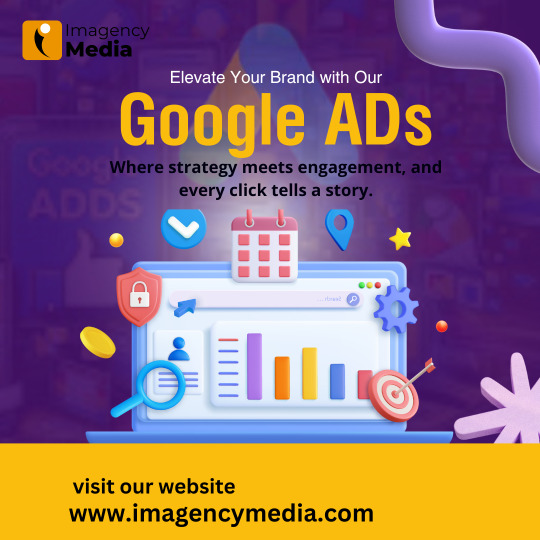
8. Future Trends in Google Ads
Automation and AI in Google Ads: The future of Google Ads is increasingly focused on automation and artificial intelligence. These technologies are enabling more precise targeting and bid optimization, allowing advertisers to achieve better results with less manual intervention.
Privacy Concerns and Regulations: As privacy regulations evolve, Google Ads is adapting by offering more privacy-focused solutions. This includes new ways to target users without relying on third-party cookies, ensuring that advertisers can continue to reach their audience while respecting user privacy.
9. Conclusion
Google Ads remains one of the most effective tools for driving online traffic and achieving business goals. By understanding how the platform works and continuously optimizing your campaigns, you can achieve significant results. As a trusted digital marketing agency, we are here to help you navigate the complexities of Google Ads and unlock its full potential for your business. Whether you're just starting or looking to optimize existing campaigns, our expertise can help you achieve your marketing objectives.
#digital marketing#digital services#google ads#search engine optimization#seo#social media marketing#branding#business
2 notes
·
View notes
Text
The Future of Advertising Copy: Trends and Innovations

In the ever-evolving world of advertising, the craft of creating compelling narratives remains essential. However, as technology advances, so does the way these stories are told. Advertising copy is undergoing a significant transformation. As technology advances and consumer behaviors shift, the strategies used to captivate audiences are becoming more innovative and precise. Brands are no longer relying solely on traditional methods but are instead embracing new trends and tools to enhance their messaging. This article delves into the future of advertising content creation, exploring key trends and innovations shaping its trajectory.
Personalization at Scale
Personalized content is no longer a luxury; it’s an expectation. Consumers are inundated with advertisements daily, making tailored messages a necessity for capturing attention. In the coming years, brands will leverage artificial intelligence (AI) and machine learning to craft hyper-personalized content. These technologies analyze consumer data to create unique messages that resonate with individual preferences, needs, and behaviors. From email campaigns to dynamic website content, the ability to speak directly to a consumer’s interests will redefine how brands connect with their audiences.
The Rise of Interactive Storytelling

Storytelling continues to be a key element in successful advertising, but its format is evolving. Interactive storytelling, which enables audiences to actively engage with the narrative, is on the rise. Through immersive videos, augmented reality (AR) experiences, or gamified ads, interactive content encourages consumers to get involved, rather than just watch.
For example, AR filters on social media platforms let users experience a product virtually, creating memorable moments that go beyond static advertisements. Similarly, brands are experimenting with choose-your-own-adventure-style campaigns, where consumers can navigate a story tailored to their preferences.
Sustainability and Ethical Messaging
As environmental concerns take center stage globally, advertising content is aligning with these values. Brands that prioritize sustainability and social responsibility are increasingly appealing to conscious consumers. This trend is not just about promoting eco-friendly products; it’s about embedding ethical practices into a brand’s identity and communicating them effectively.
Advertising content in the future will focus on transparency, showcasing a brand’s commitment to reducing its environmental footprint and supporting social causes. However, such messages must be backed by genuine actions, as consumers are quick to call out "greenwashing" or insincere attempts to capitalize on ethical trends.
Voice Search and Conversational AI

The growing popularity of voice-activated devices is influencing how advertising is crafted. With millions of people using smart speakers and voice assistants like Alexa, Siri, and Google Assistant, brands are exploring new ways to optimize their content for voice search. Unlike traditional search engine optimization, voice-focused advertising relies on natural, conversational language that aligns with how people speak.
In addition, conversational AI tools are being integrated into advertising strategies. Chatbots, for instance, provide personalized interactions that guide consumers through purchasing decisions, answer queries, or recommend products. These technologies not only enhance the user experience but also allow brands to maintain a consistent tone and style across platforms.
Data-Driven Creativity
Data is transforming the creative process in advertising. While creativity remains the heart of effective messaging, data-driven insights now guide the ideation process. Predictive analytics help brands identify emerging trends and consumer preferences, enabling them to stay ahead of the curve.
For instance, by analyzing engagement metrics on social media, brands can determine which type of content resonates most with their audience. This insight ensures that advertising messages are not only creative but also strategically aligned with consumer behavior. Data-driven creativity allows for more targeted campaigns, reducing guesswork and improving return on investment.
Inclusivity in Advertising Content

Inclusivity is no longer optional in advertising; it’s essential. The future of advertising content is diverse, representing a wide range of voices, cultures, and identities. Consumers expect to see themselves reflected in the ads they encounter, and brands that fail to prioritize inclusivity risk alienating large segments of their audience.
Inclusive advertising involves more than just featuring diverse faces; it requires understanding and respecting the nuances of different communities. Brands must ensure that their messaging is not only representative but also culturally sensitive and meaningful. This shift toward inclusivity is reshaping how brands communicate their values and connect with their audience.
The Impact of Emerging Technologies
Emerging technologies such as virtual reality (VR), blockchain, and the metaverse are redefining the boundaries of advertising content. VR offers immersive experiences that allow consumers to engage with a brand in a virtual environment, creating a sense of presence and connection.
Meanwhile, blockchain technology is revolutionizing transparency in digital advertising, helping brands build trust by verifying the authenticity of their content and ensuring fair distribution of ad spend. The metaverse, a virtual shared space where people interact in real time, presents endless possibilities for innovative brand storytelling and product placement.
You can also watch : How to Create Ad Copies with AdsGPT ?
youtube
Conclusion
The future of advertising copy is bright, brimming with opportunities for innovation and creativity. As personalization, interactivity, and inclusivity take center stage, brands will need to adapt to these changing dynamics to stay relevant. Emerging technologies will continue to shape the landscape, offering new tools to captivate and connect with audiences.
Ultimately, the success of advertising will depend on a brand’s ability to balance creativity with authenticity, leveraging data and technology to craft messages that resonate on a personal level. By staying ahead of these trends, brands can ensure their advertising content remains impactful and effective in an increasingly competitive market.
1 note
·
View note